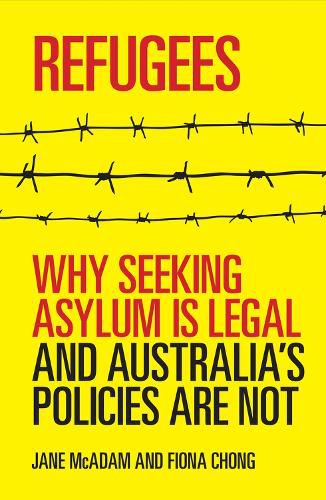Readings Newsletter
Become a Readings Member to make your shopping experience even easier.
Sign in or sign up for free!
You’re not far away from qualifying for FREE standard shipping within Australia
You’ve qualified for FREE standard shipping within Australia
The cart is loading…






Stopping the boats, blocking queue-jumpers and proving who is a ‘real’ refugee have become national obsessions. Misconceptions about refugees and asylum seekers seem to be increasing and governments and media continue to exploit anxieties in the community. This clear-headed book rejects spin and panic to explain what our obligations are and who the refugees and asylum-seekers are.
It shows that there is a gap between the rhetoric and the legislated rights of refugees, who have been resettled from camps abroad, and asylum seekers, who arrive by boat. It explains the difference between asylum seekers, refugees and migrants. It shows why our asylum-seeker policies, developed over decades, are at odds with the legal obligations we have signed up to. And using real-life examples, it reminds us that we’re talking about real people and their children.
$9.00 standard shipping within Australia
FREE standard shipping within Australia for orders over $100.00
Express & International shipping calculated at checkout
Stopping the boats, blocking queue-jumpers and proving who is a ‘real’ refugee have become national obsessions. Misconceptions about refugees and asylum seekers seem to be increasing and governments and media continue to exploit anxieties in the community. This clear-headed book rejects spin and panic to explain what our obligations are and who the refugees and asylum-seekers are.
It shows that there is a gap between the rhetoric and the legislated rights of refugees, who have been resettled from camps abroad, and asylum seekers, who arrive by boat. It explains the difference between asylum seekers, refugees and migrants. It shows why our asylum-seeker policies, developed over decades, are at odds with the legal obligations we have signed up to. And using real-life examples, it reminds us that we’re talking about real people and their children.